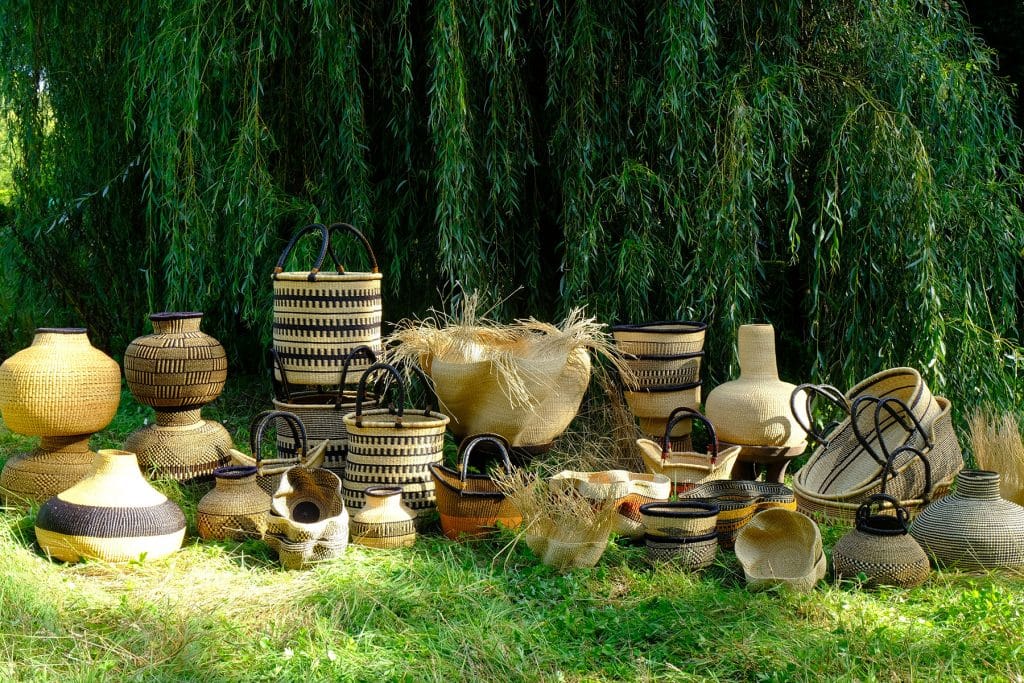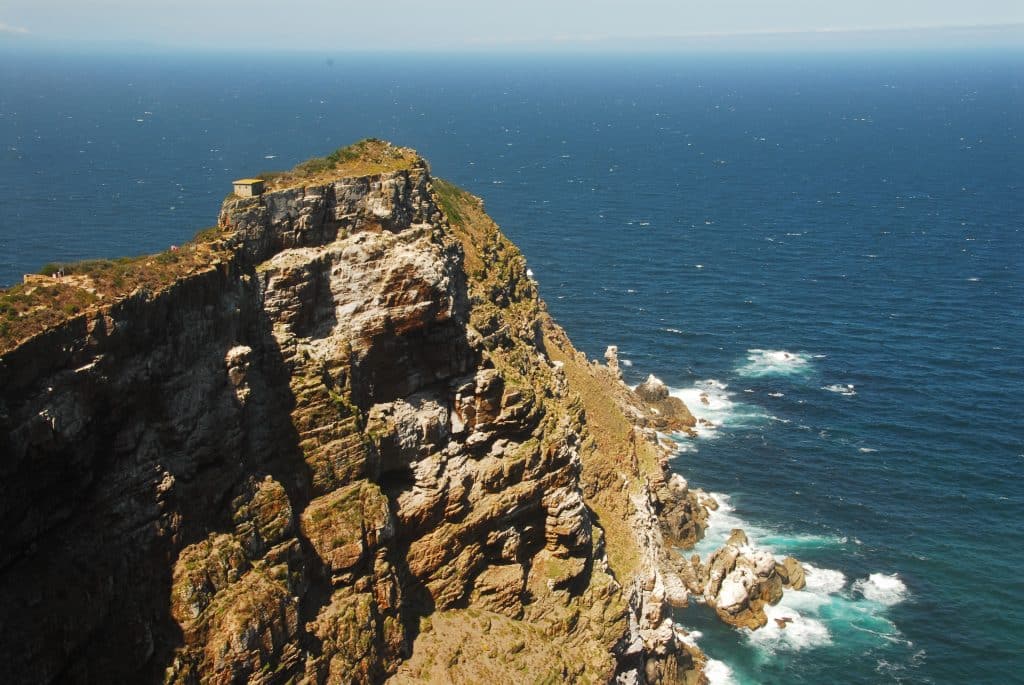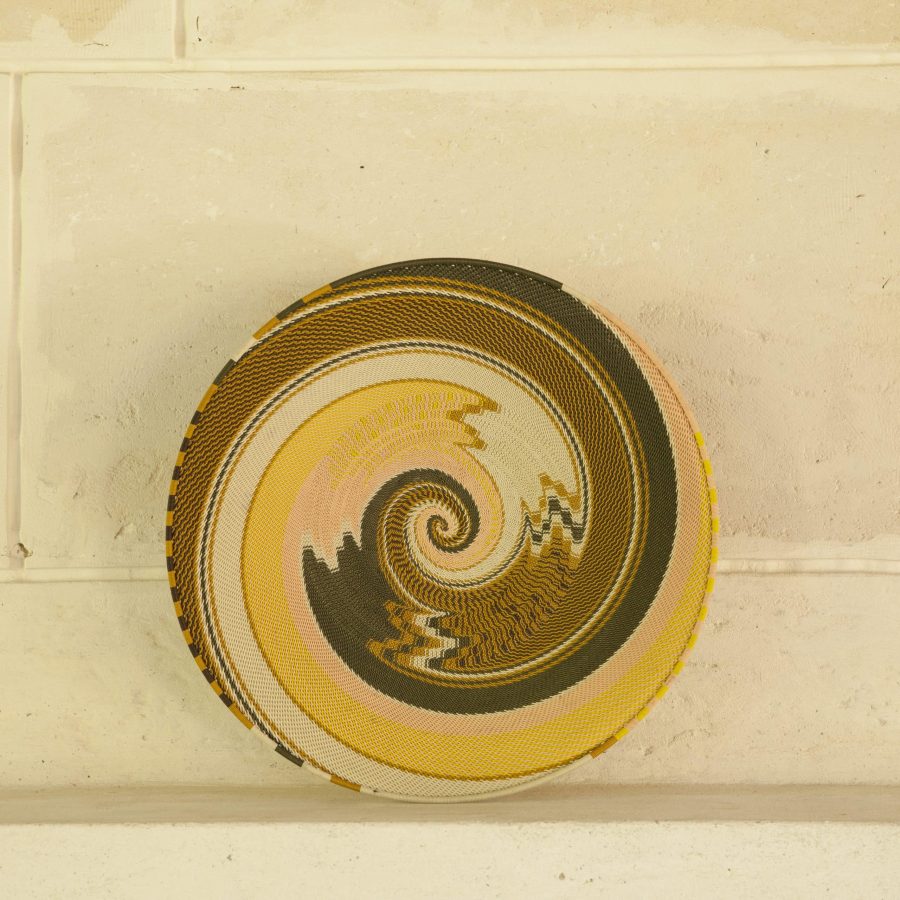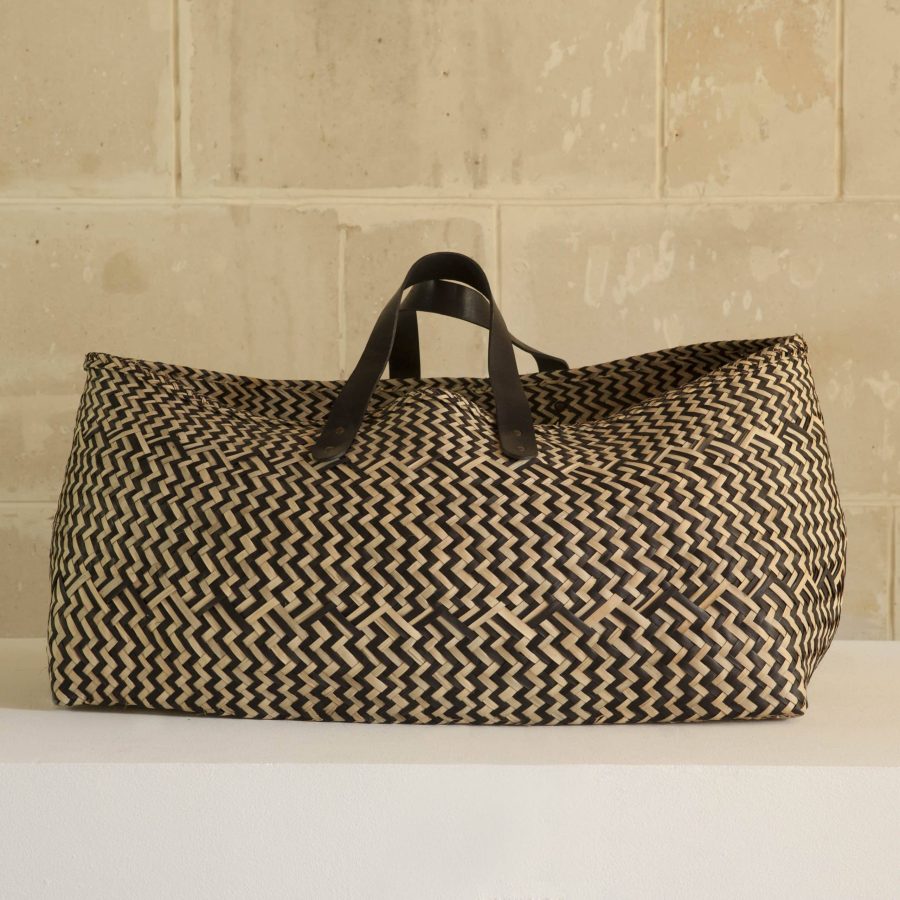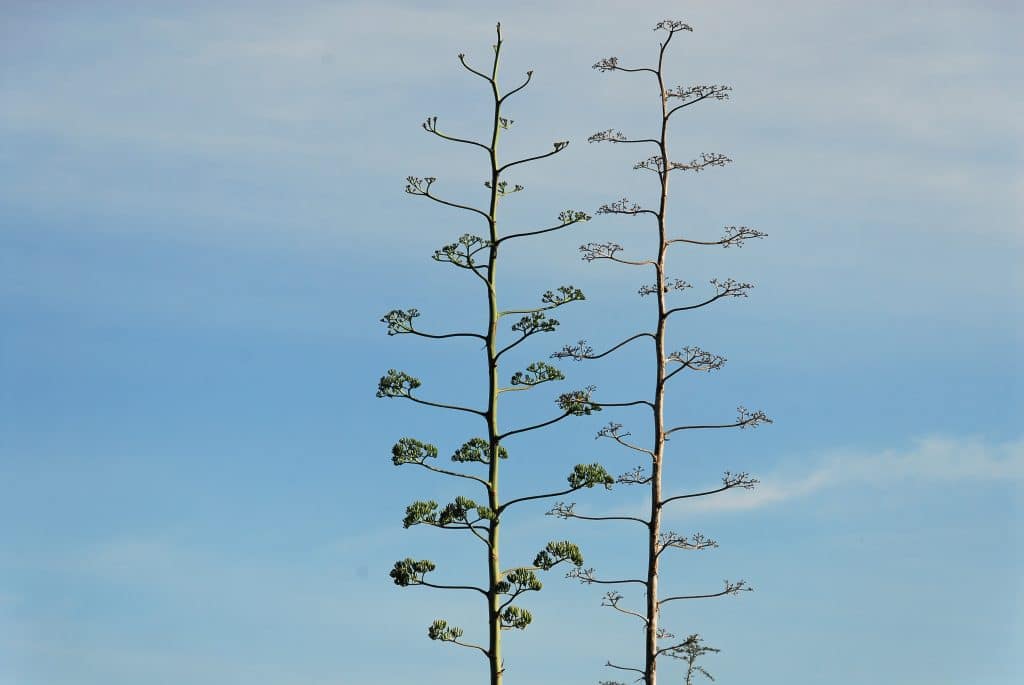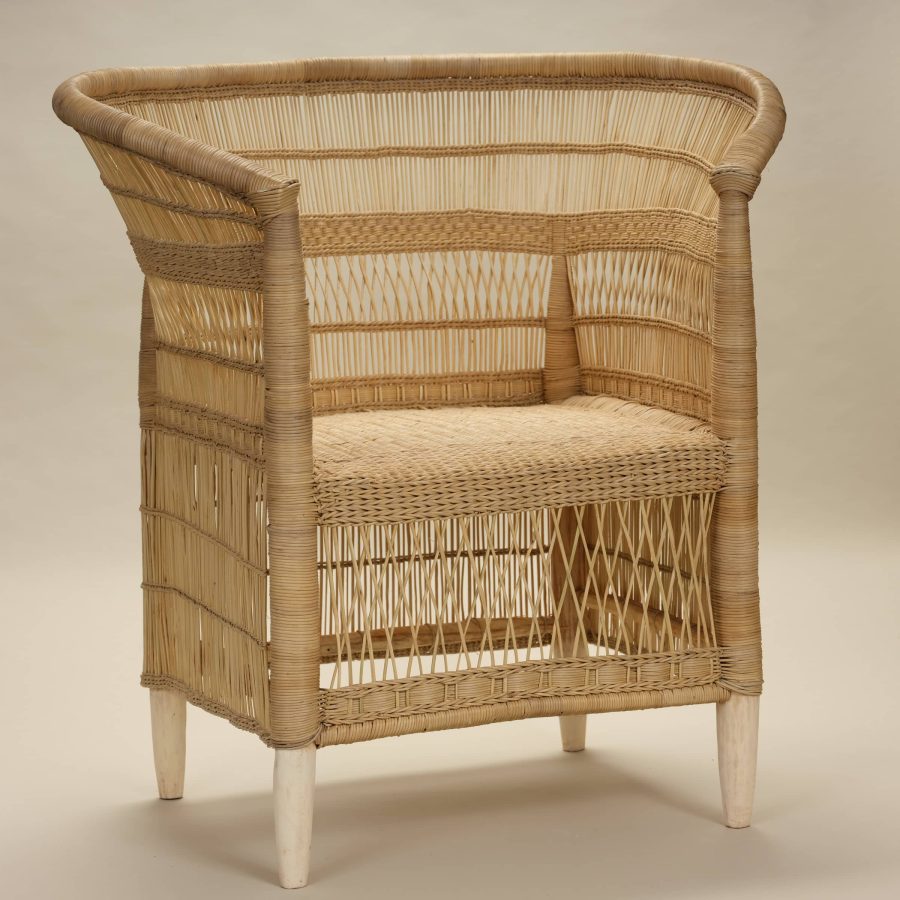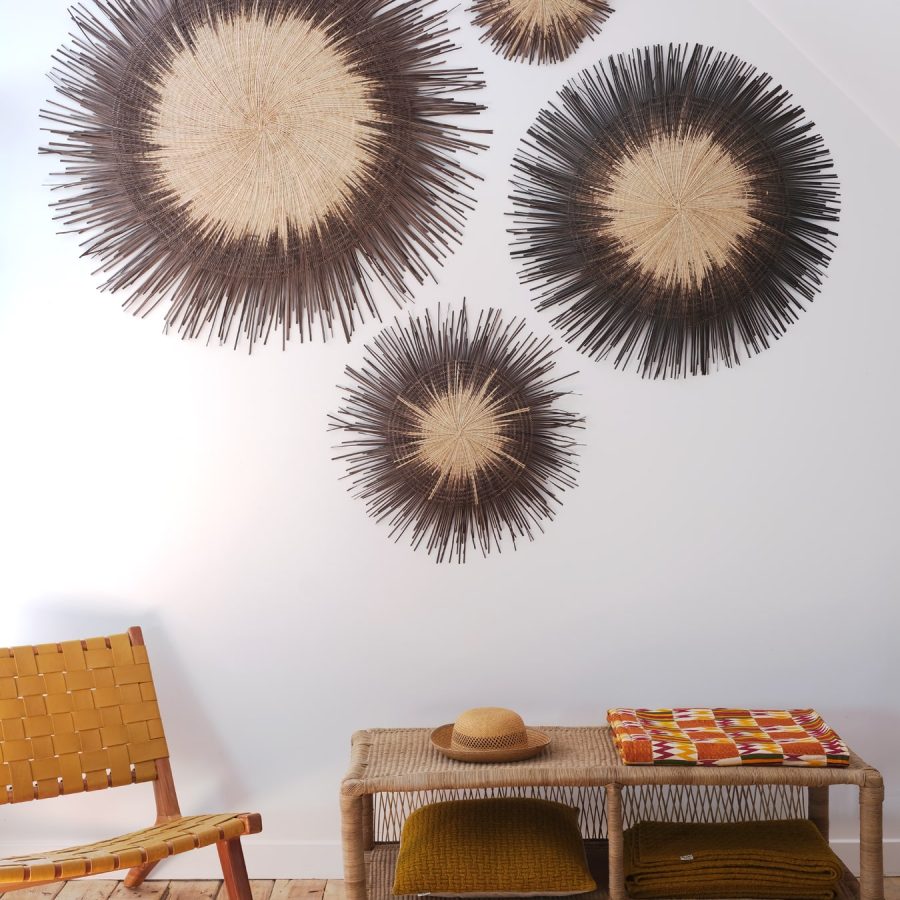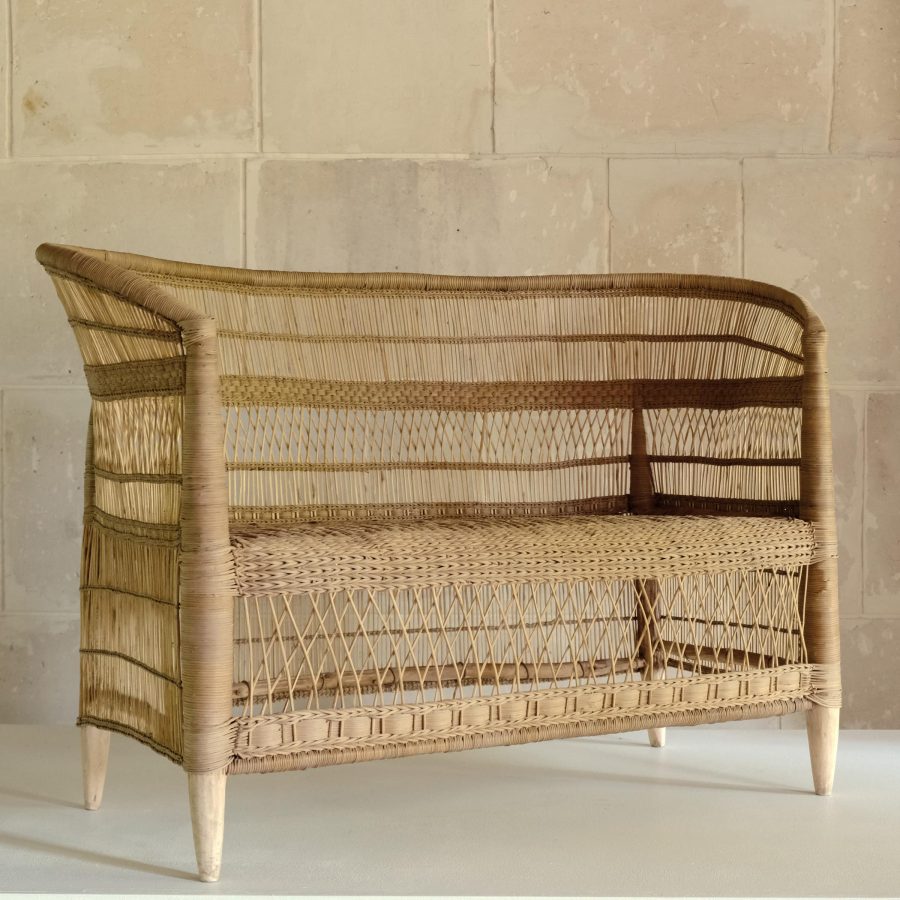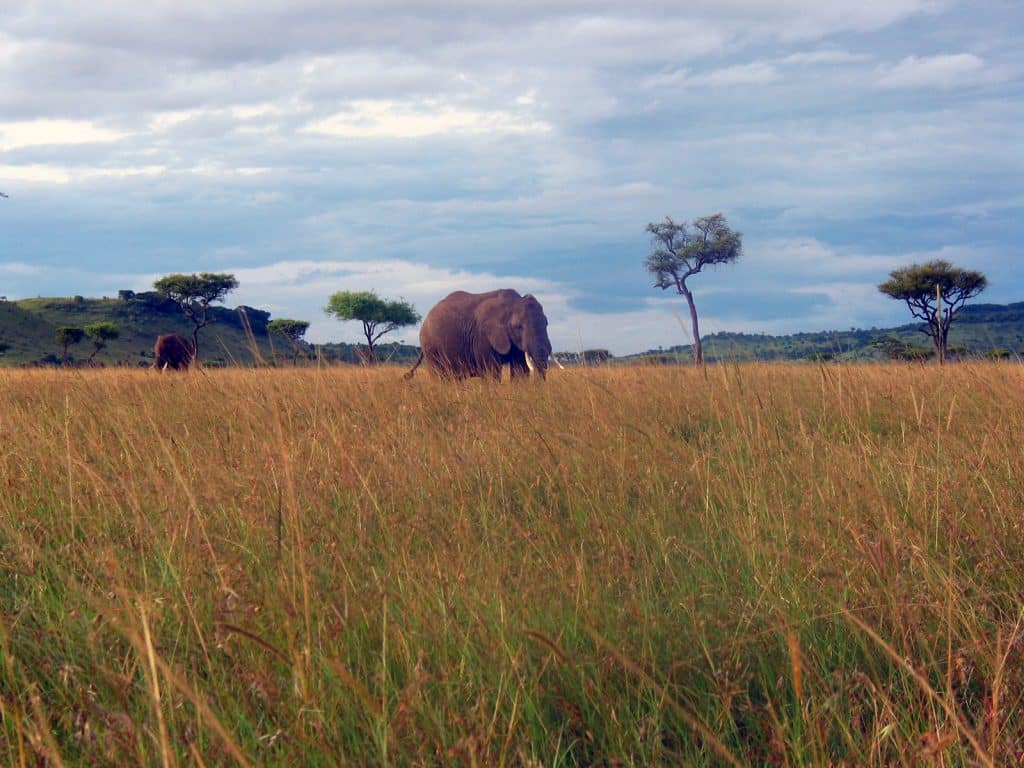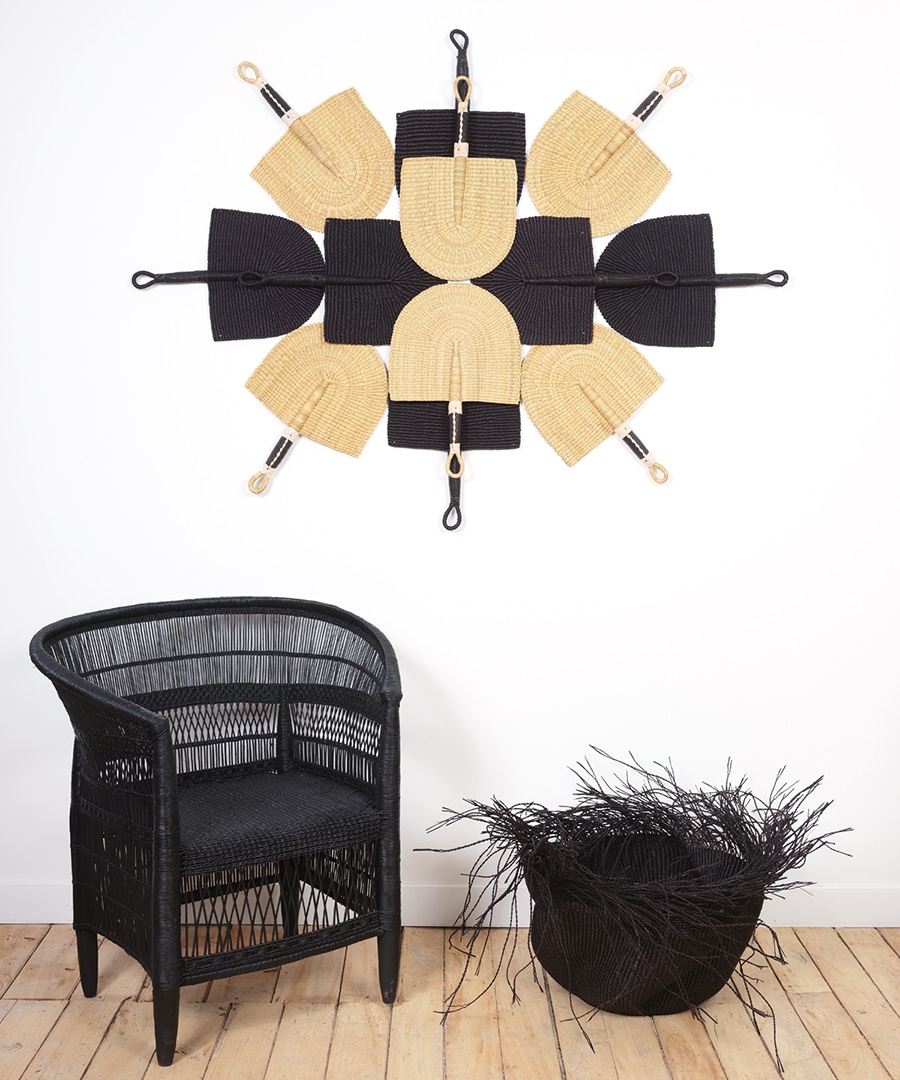The Bolgatanga region in north-eastern Ghana is singularly famous for its colourful baskets made of elephant grass, an herbaceous plant also known as Eulalia or Veta Vera.
By developing new lines and working on colour palettes, working directly with the best craftsmen, AS’ART is helping to restore this craft to its former glory.
It is a whole community that is spreading its know-how around this activity, in every house, in every courtyard, to provide these new colourful products, with the most astonishing and magnificent shapes. These basketry products are more than functional and/or aesthetic products, they are for us truly objects that will be recognised over time as everyday art objects.
South Africa abounds in extremely meticulous skills such as beadwork and basketry.
Telephone wire basketry is the result of the delicate manual braiding of telephone wires and copper wire. This South African craft is a remarkable example of the adaptation of ancestral know-how to contemporary materials.
Our collection of telephone wire basketry sublimates the inventiveness of the craftsmen who bring to life an infinite number of patterns. Each year, we enrich the collection with colour variations that are alternately vibrant and sober.
-
Rattan Armchair, Malawi
399,00 € Read more -
Sun Circles, brown, Malawi
95,00 € – 245,00 € Select options -
Rattan Double Seater sofa, Malawi, original
750,00 € Add to cart
Furniture from Malawi is handmade by craftsmen located in villages in the south of the country. They use an invasive climbing plant, Cocculus hirsutus, commonly considered as rattan.
Through its elegance and simplicity, this comfortable furniture range brings a refined and exotic touch to a classic interior as well as a design one. The line, evocative of a “colonial” era, has been turned contemporary.
The collection includes armchairs, benches or stools, coffee tables as well as mirrors and wall baskets. It is a real craze with private individuals as well as hotels and restaurants.
AS’ART creates its own hand-carved objects from a natural resource: soapstone, also known as Kisii stone. The Kisii stone is extracted in the Nyanza province, in the west of Kenya, on the shores of Lake Victoria.
In its natural state, the stone is cream-coloured. It is very fine-grained and is polished with water, giving it an incredibly silky, even sensual touch. This stage of the process, during which the craftsman “washes” the stone in water that becomes foamy, is undoubtedly the origin of the nickname “soapstone”. The soapstone is then dyed and can be engraved by hand. For 30 years, AS’ART has been working with the same workshop.
The new collection will be available in January 2021.

